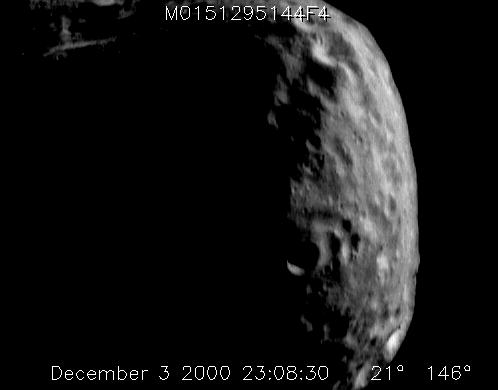Hello asteroid 433 Eros … and goodbye. We got a slightly panic-y sounding comment from a Facebook friend yesterday about asteroid 433 Eros, which will be making its closest approach to Earth since 1975 today (January 31, 2012). Afterwards, I saw a few misleading headlines about this event. Yes, Eros is passing closer on Tuesday than it has in some decades. In fact, although I had a tough time finding the information, its perigee – or closest point to Earth – appears to be January 31 at around 11 UTC – or 5 a.m. CST – which means it has already passed closest. The closest point of Eros was not very close. At its closest, it was about 16,608,000 miles (26,729,000 km) away – some 70 times the moon’s average distance. It was some 80 times farther than the closest point of a much smaller body that passed safely within the moon’s orbit on November 8, 2011. That object was called 2005 YU55. So there was – and is – absolutely no danger at all from 433 Eros at this 2012 passage.
Even though it is closer than since 1975 – and even though it won’t come this close again until 2056 – Eros won’t be close enough to view with the eye alone. But amateur astronomers with backyard telescopes have been watching it and will continue to observe it for probably another week or so at least.
Skyandtelescope.com has information on an Eros Parallax Project, a chance for amateur gazers to contribute to science. In fact, Eros helped astronomers pin down the exact distance to the sun in the 20th century, first with a worldwide program of observations of Eros as a passage much like today’s in 1900-1901, then with even greater exactitude at another close passage in 1930–1931:
A similar close pass of Eros in 1931 allowed professional astronomers to refine the true scale of the solar system, starting with the Earth-Sun distance (the astronomical unit). This was the last great improvement in the scale of the solar system until interplanetary radar began making direct distance measurements in the 1960s.
If you have a small telescope, you can try to observe Eros.

Those of us without small telescopes will not see 433 Eros. It’s too faint to be seen with the eye alone. Eros is a near-Earth asteroid (NEA). It’s about 21 miles (34 km) wide. It was discovered in 1898 by astronomers Carl Gustav Witt in Berlin and Auguste Charlois in Nice.
Eros also made history in 2000, when NASA’s NEAR Shoemaker probe approached it, went into orbit around it and even made a soft landing on its surface. This was the first such orbit of an asteroid. NEAR took over 160,000 images of Eros’ surface and helped researchers conclude that this asteroid is a solid object rather than a “flying rubble pile” as some had previously thought.
Bottom line: Asteroid 433 Eros made its closest approach to Earth since 1975 on January 31, 2012 at 11 UTC (5 a.m. CST). At its closest, it was be about 16.6 million miles (26.7 million km) away – some 70 times the moon’s average distance. There is absolutely no danger at all.











